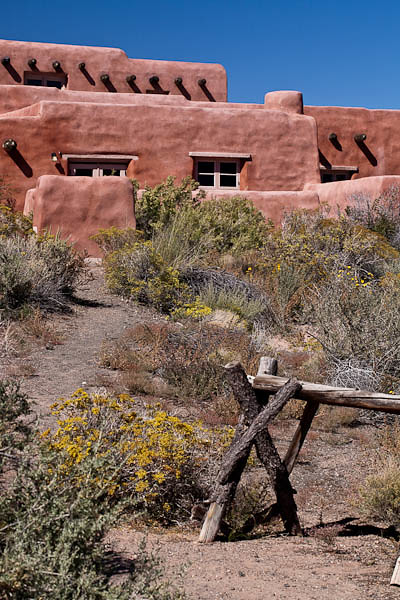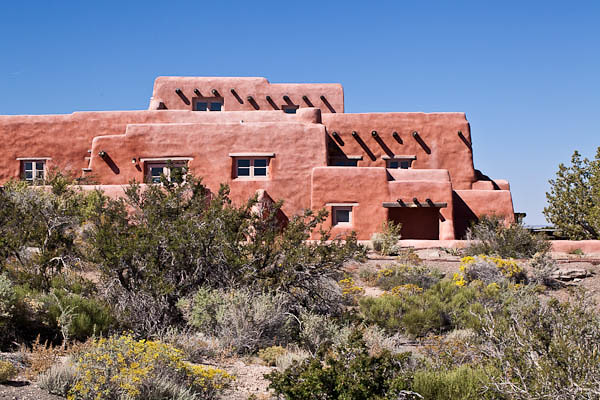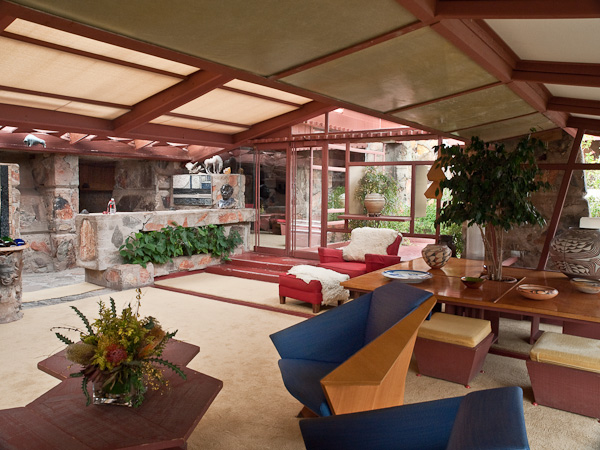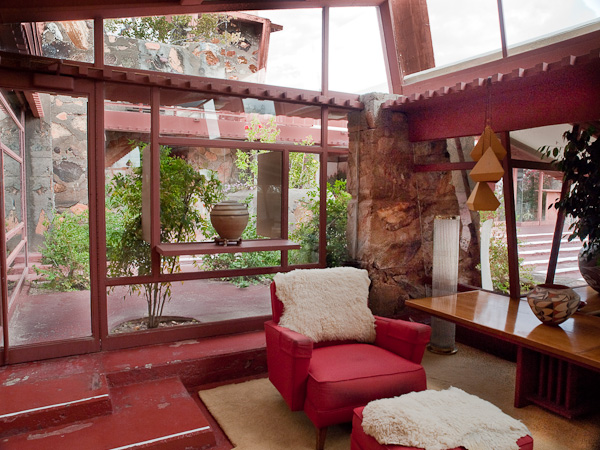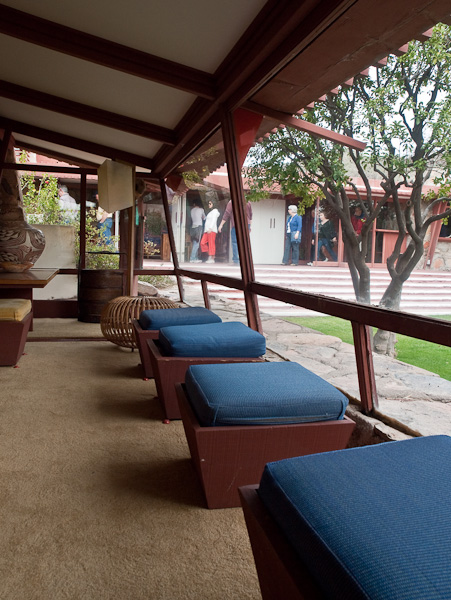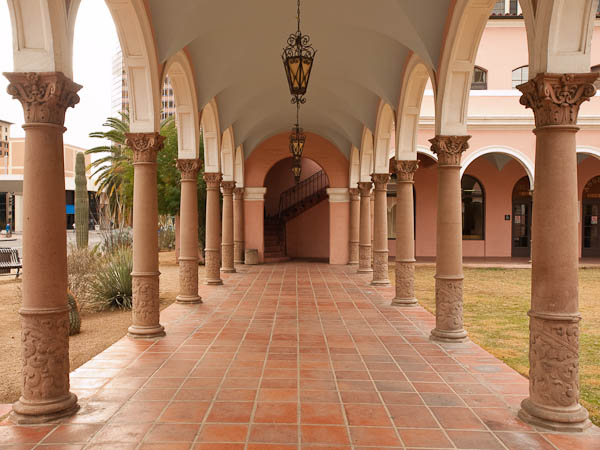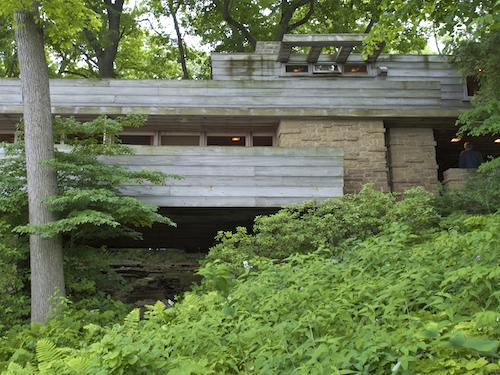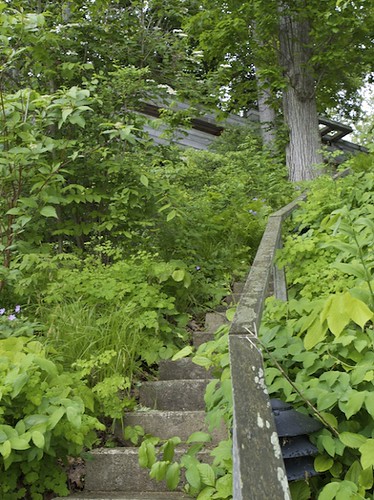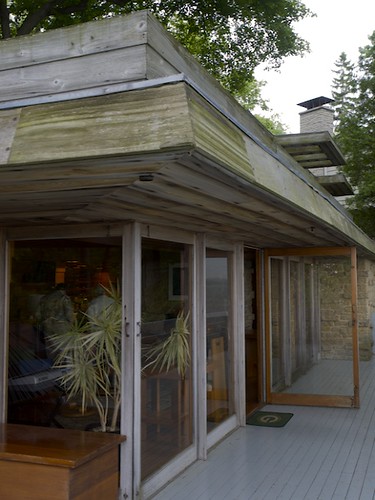On our swing through some of the Southwestern National Parks in October, we stopped at the Petrified Forest National Park in the east central region of Arizona. This park also includes the Painted Desert and this building, the Painted Desert Inn Museum. The architectural style of the inn was influenced by Pueblo Indian dwellings and Early Spanish architecture. It was built to harmonize with its surroundings and blends well with the surrounding Painted Desert.
The original inn was built in the 1920s, mostly of available stone and petrified rocks and the builders used a mud mortar to hold the structure together. It was a trading post and had a lunch counter, but it had no water or electricity. The Park Service purchased the building in 1936 and used WPA funds and Civilian Conservation Corps labor to essentially rebuild the entire structure.
In the late 1930s, National Park Service architect Lyle Bennett redesigned the building, utilizing the Pueblo Revival Style. The Painted Desert Inn re-opened for business on July 4, 1940 and was a stop on the Historic Route 66. (Petrified Forest National Park is the only national park that has a portion of the Historic Route 66 within its boundaries.) The inn’s life as an oasis in the middle of the desert lasted only a couple of years, and ended with the beginning of World War II. Traveling was greatly curtailed and the inn closed in 1942.
Not to be ignored for long, the Inn again opened and was operated from 1947 through 1963 by the Fred Harvey Company, a company who was a concessionaire in many of the Western National Parks. Then, after sitting unused for a dozen years, the building was scheduled for demolition in 1975. However a public outpouring of concern for the historic building convinced the Park Service to save the Painted Desert Inn. It opened in 1976 as a museum and bookstore on a limited basis.
It again underwent extensive repair in 2004-06 and then reopened as the museum and bookstore now pictured. The building is on the National Register of Historic Places and is also a National Historic Landmark.
The building is a stunning example of architecture, and has a history well worth exploring. There are exhibits inside the Inn which shed light on its fascinating history. A walk around the entire structure and through its many rooms reveals small architectural gems such as arched doorways and windows, hand crafted metal lamps, and an intriguing wooden beam support system in the ceilings.
In the next posts, I’ll feature the interior of the Painted Desert Inn, so lovingly and meticulously restored, and filled with art and intricate design features, and also photographs of the Painted Desert and the Petrified Forest landscapes.

